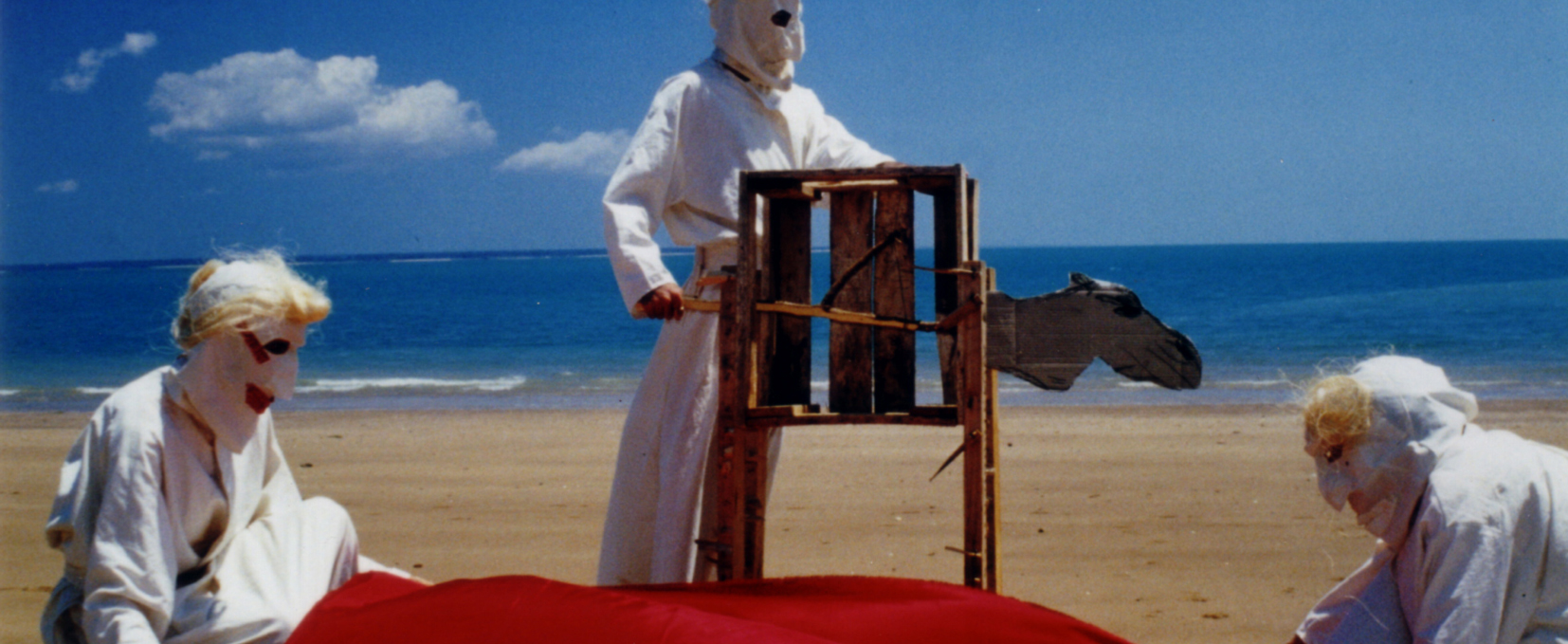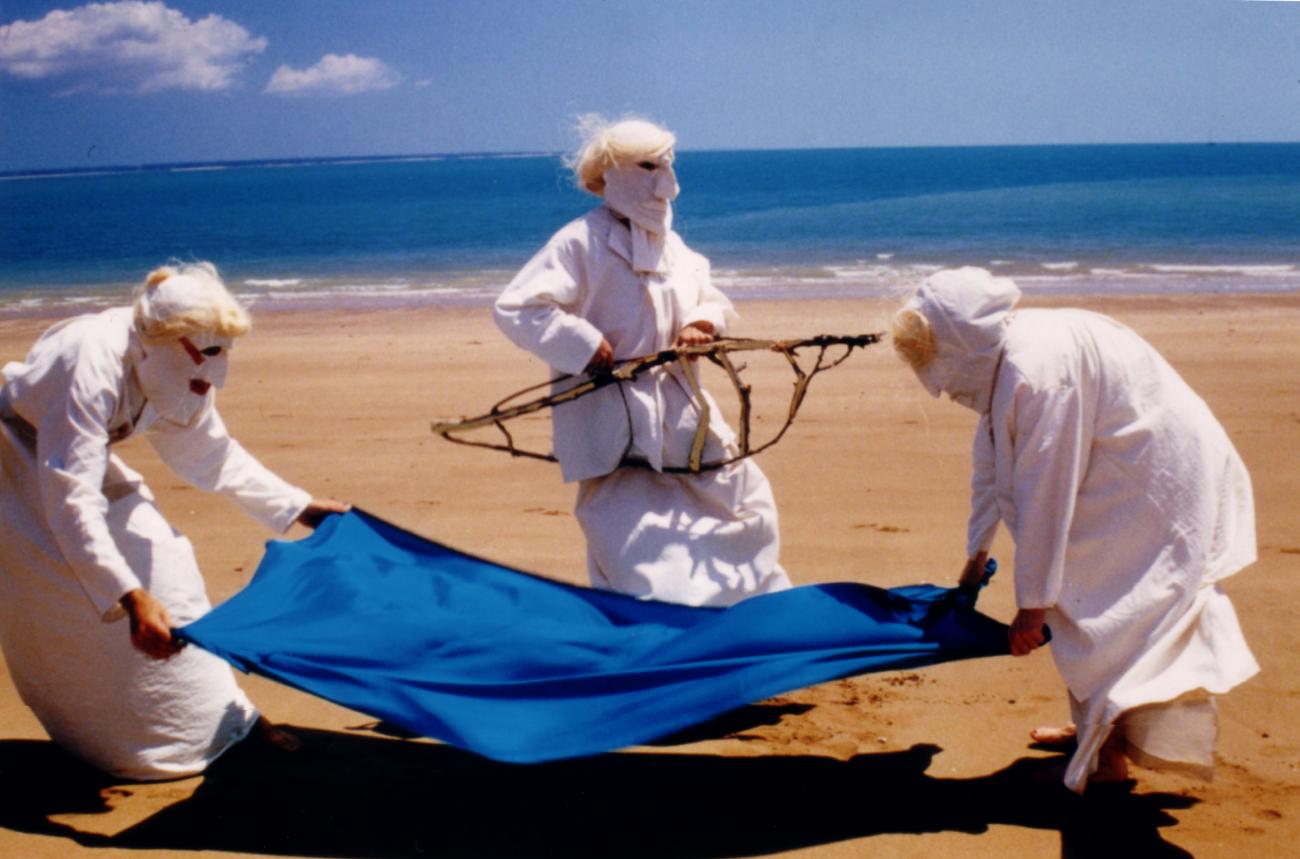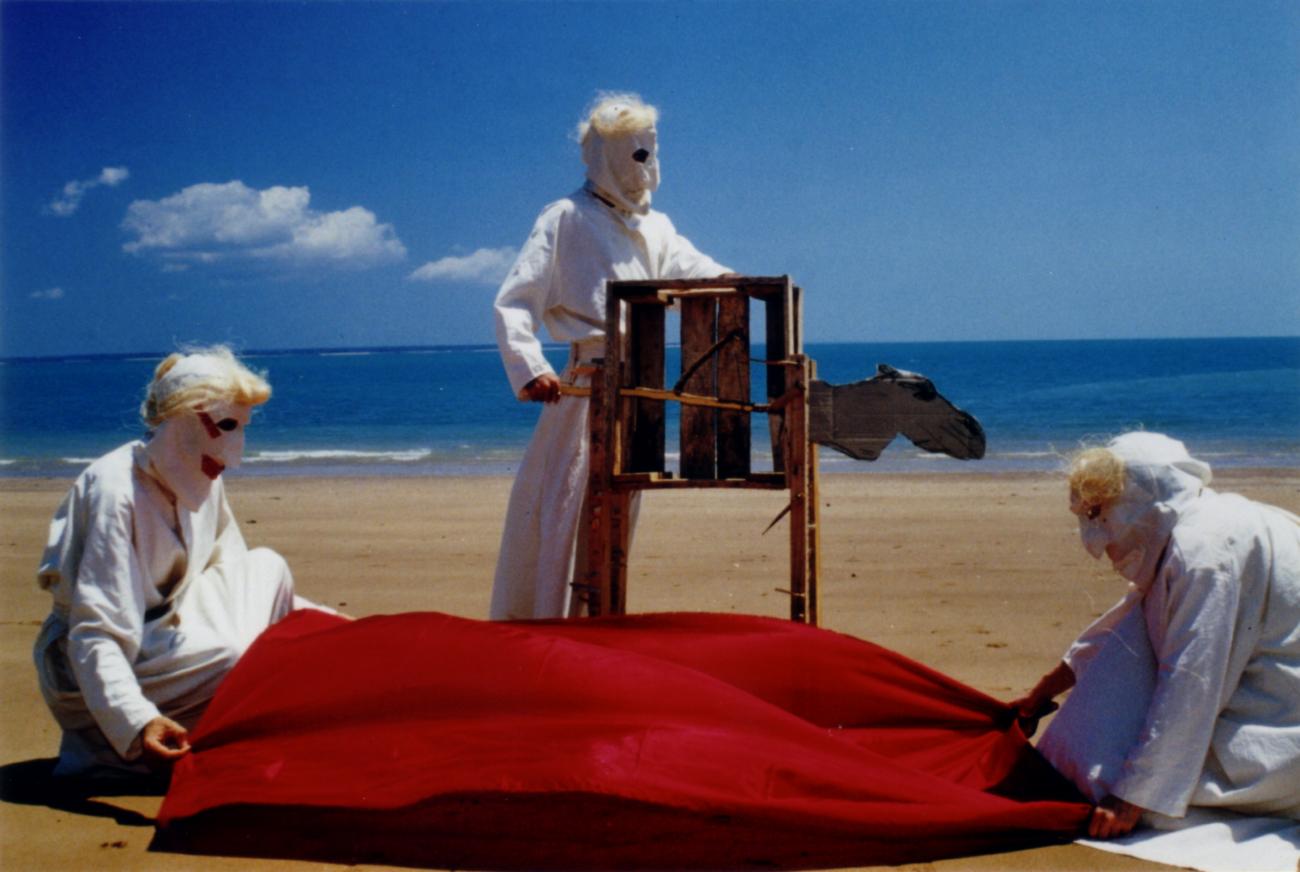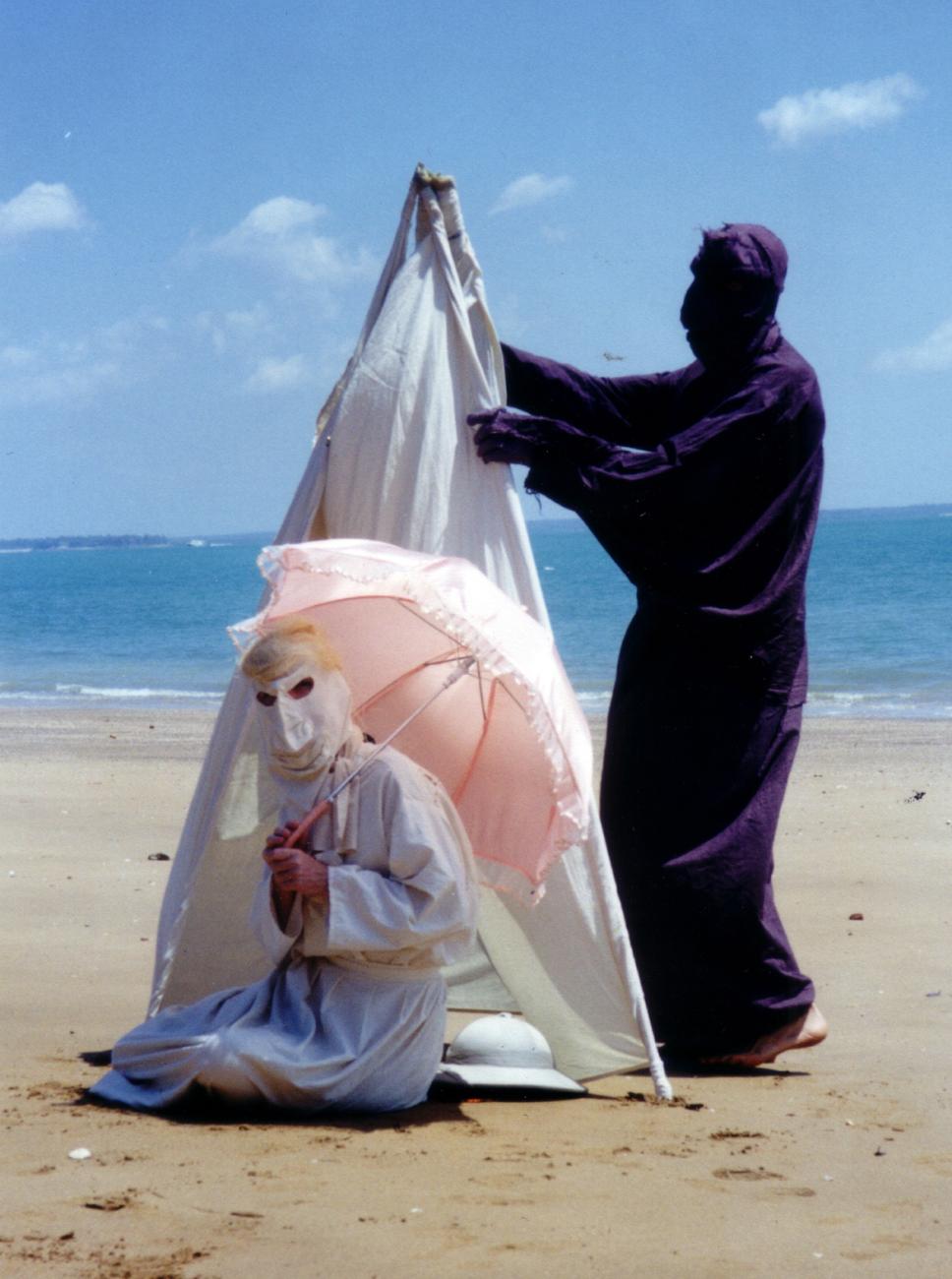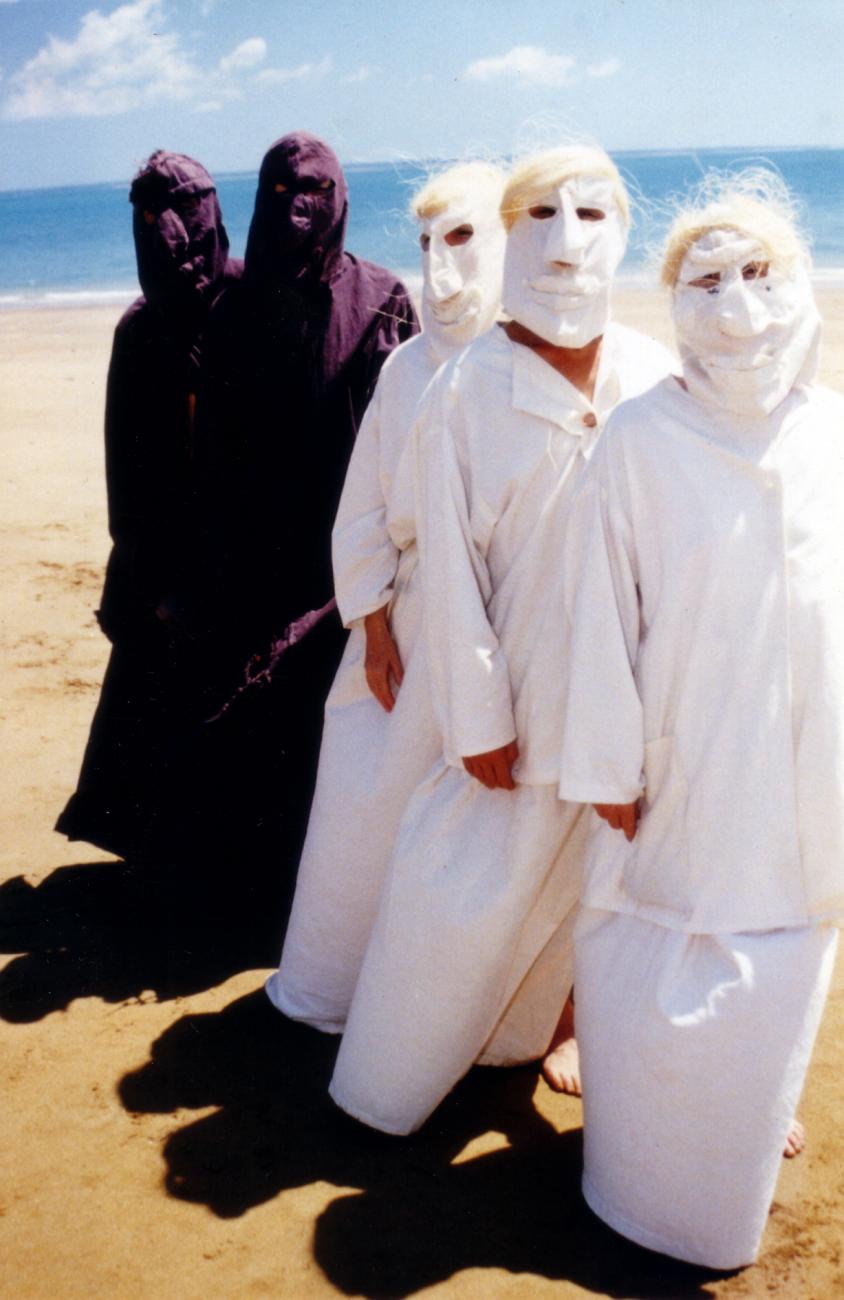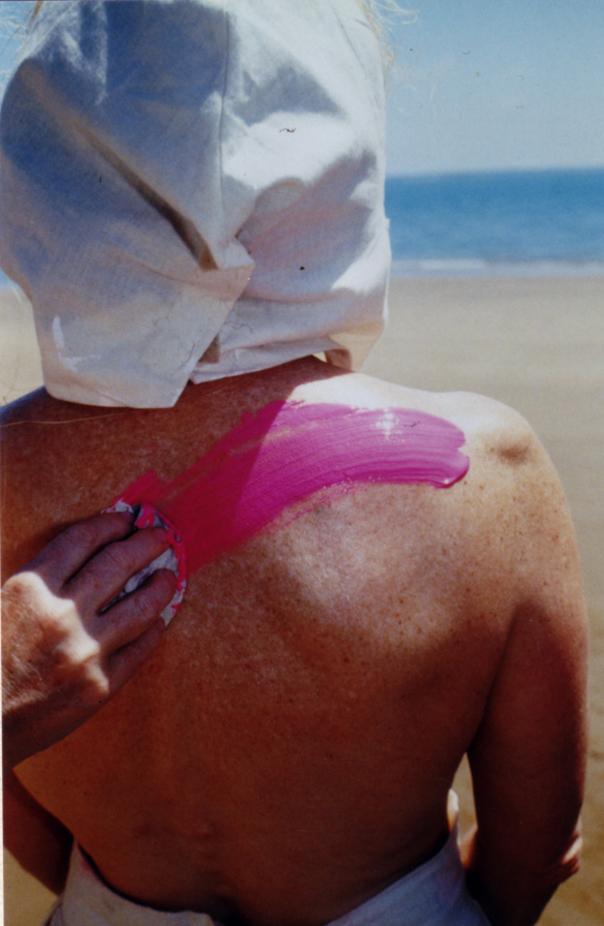Shades of Pink
Text
Museum and Art Gallery of the Northern Territory, Darwin
September 1-3, 1999
Presented by Brown’s Mart Community Arts for the Festival of Darwin
"Fiercest White Woman in Captivity"
From 1942-1946 Miss Pink lived with Warlpiri people at Thompson’s Rockhole in the Tanami Desert, where she attempted to set up a ‘secular sanctuary’ for Warlpiri – a campaign that engaged her considerable lobbying skills and consumed a significant amount of her time over the rest of her life.
The Miss Pink projects took on evolved over a period of time. We first heard about her from an old Jangala while we were researching our Ngapa Project. Sitting at a sacred site that he was owner for, and the place of his birth, he told us of the first time he ever saw a white person, and that was Miss Pink (Olive Muriel Pink).
He became a runner for her, delivering her letters to Mt Doreen station. This began a long series of research and development works based around this extraordinary woman whom the Warlpiri called Tarlkinjirra. A lot was written about her from a Western perspective, but very little came from the Warlpiri
Shades of Pink came into being through five artists of different practices being stirred by the stories of, or contact with Olive Pink. The New Media Arts of the Australia Council for the Arts supported the artists to explore a joint language, moving through each other’s art forms and areas of practice. It was not always an easy or comfortable process. However, like Olive Pink, their pioneering spirit drove them to extend their boundaries. This led into a young performance work in progress, exploring possibilities for a larger project in the future.
A New Media Arts Project
This was a new Media Arts project that brought together a visual artist, a choreographer, a composer-musician, a writer, and a sculptor. Together they created a piece of theatre that was based on Miss Olive Muriel Pink, the "fiercest white woman in captivity".
The project was divided into two parts. The first part saw the artists travelling to different places to research the life of Olive Muriel Pink. Three went to Alice Springs where Olive spent the last part of her life. One went to the National Archives in Canberra to wade through the volumes of files on her life and one went to Lajamanu to research the effect she had on the Warlpiri people with whom she came into contact.
The second part was the creation of a multidisciplinary work that was performed at the Museum and Art Gallery of the Northern Territory.
The audience was invited into the ‘parlour’ world of Miss Pink, taken on a journey across the Tasman, through a world of Vice Regal circles into the deserts of central Australia, where she first met the Warlpiri people at Pirdi Pirdi. At the conclusion of the show the audience was invited to share ’sherry and Madeira cake’.
The music was adapted from Miss Pink’s personal collection of 19th century drawing room music, (except for Hardware, Journey to a Mythical Place, and Landscapes, by Romano Crivici).
“Carried” came from a Warlpiri story, translated from the original by Ted Jangala Egan. Other text was adapted from Miss Pink’s official correspondence and journals.
Creative Personnel
Collaborators and Performers: David McMicken, Tim Newth, Gay Hawkes, Claire Kilgariff, Stephen Carleton
Production Manager: Eunice de Ramos
Other related Tracks Works
- 2001 FIERCE, The Story of Olive Pink – Brown's Mart Theatre, Darwin
- 2002 FIERCE, The Meeting of Olive Pink – Araluen Centre, Alice Springs
- 2003 Between Foot and Voice
Tracks Dance 1999
Artistic Directors: David McMicken and Tim Newth
Administrator: Amanda Carlton
Inaugural Committee Members: David Taylor (Chair), Ken Conway (Vice-Chair) Chris Raynal (Treasurer), Rukshana Ramachandran (Secretary/Public Officer), Tania Lieman, Jackie Wurm, Kez Hall, Nick Papandonakis (Ordinary Committee Members), David McMicken and Tim Newth (Ex-Officio Members)
Photos
Videos
Explore Further
Responses
"Miss Pink was a good woman ... she didn’t shoot us." Peggy Napaljarri Rockman

